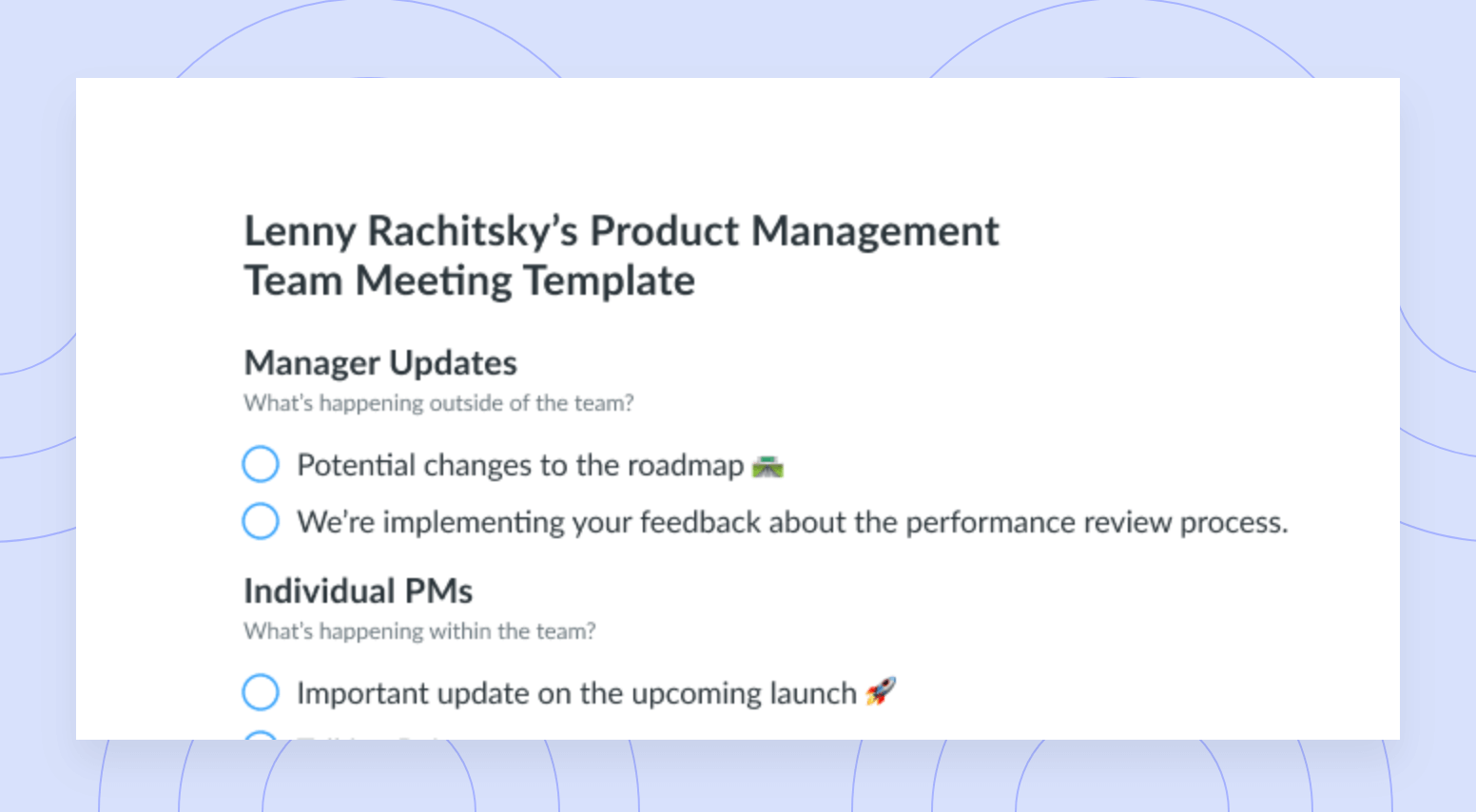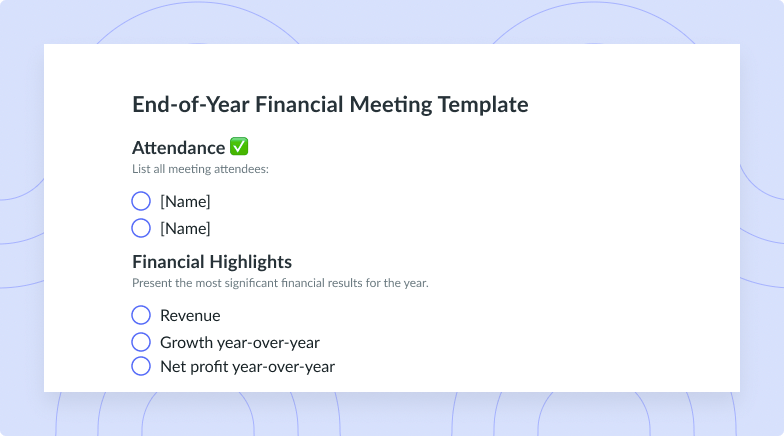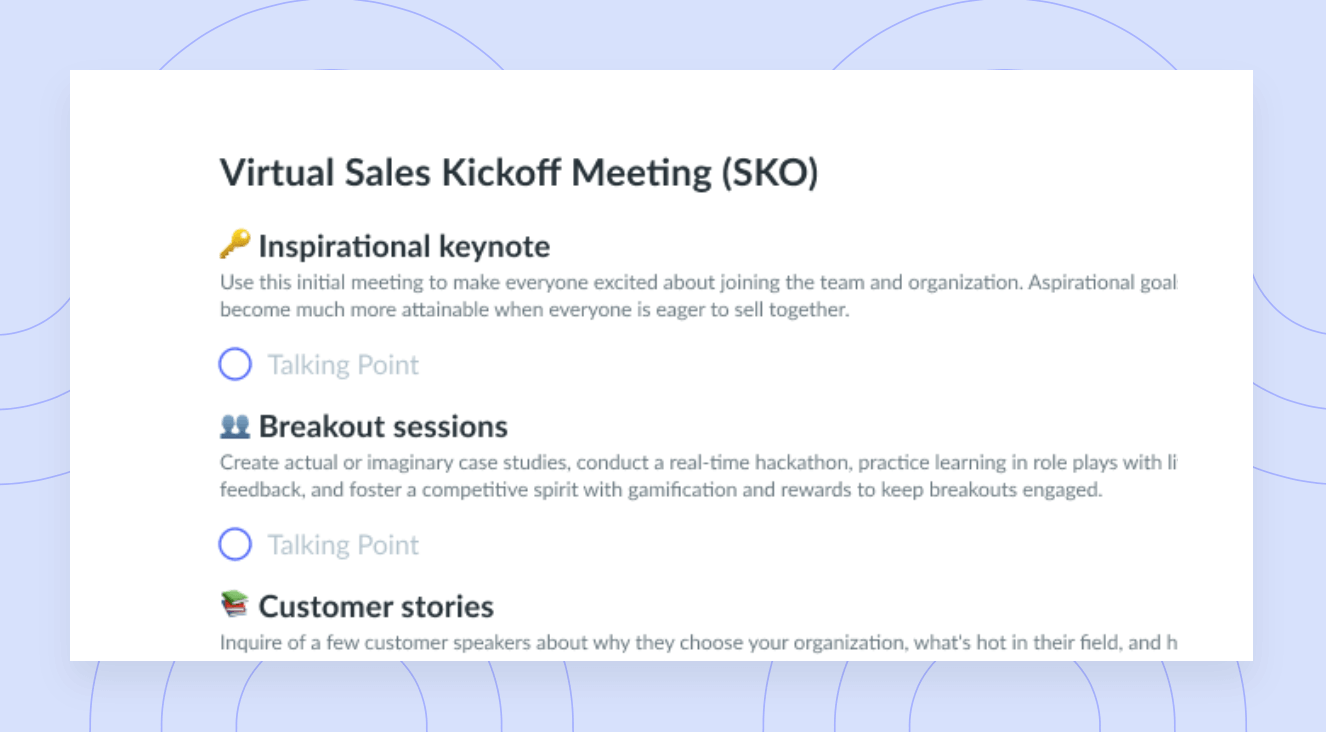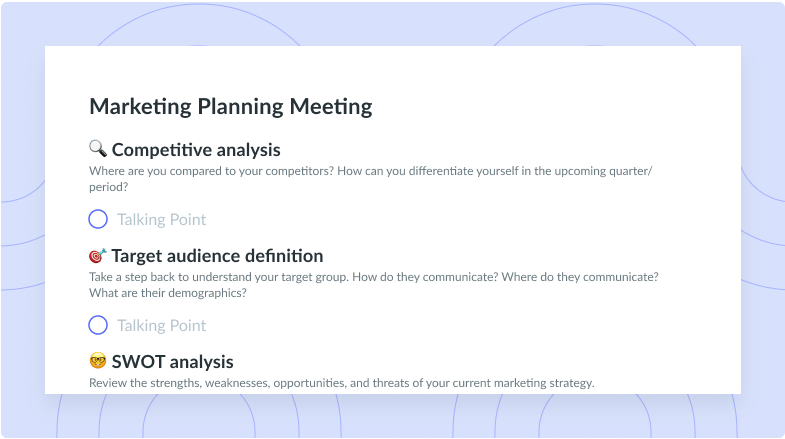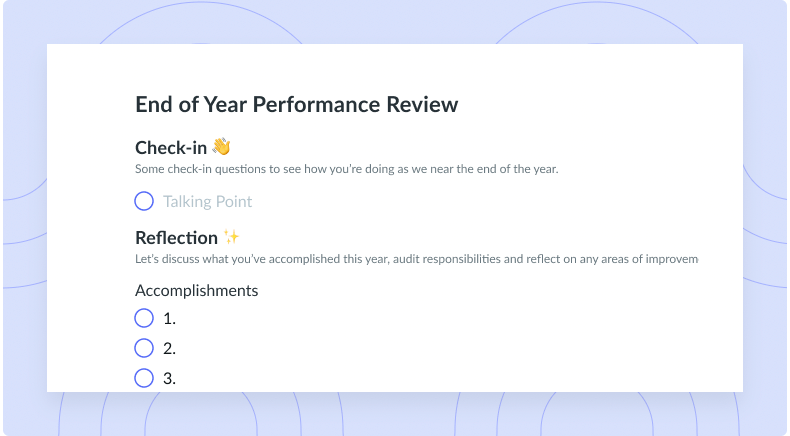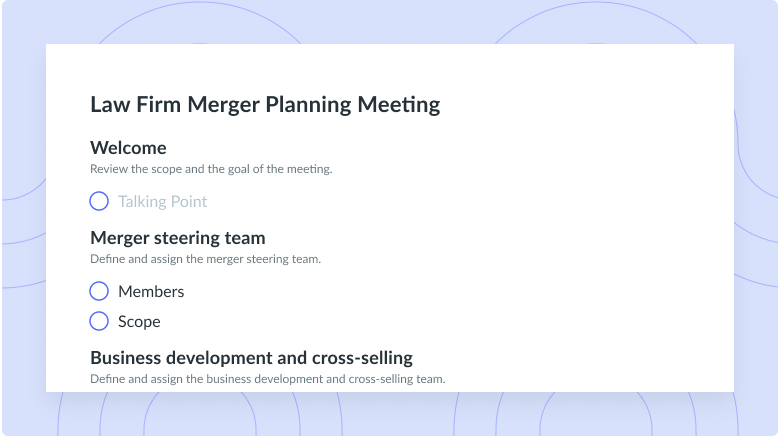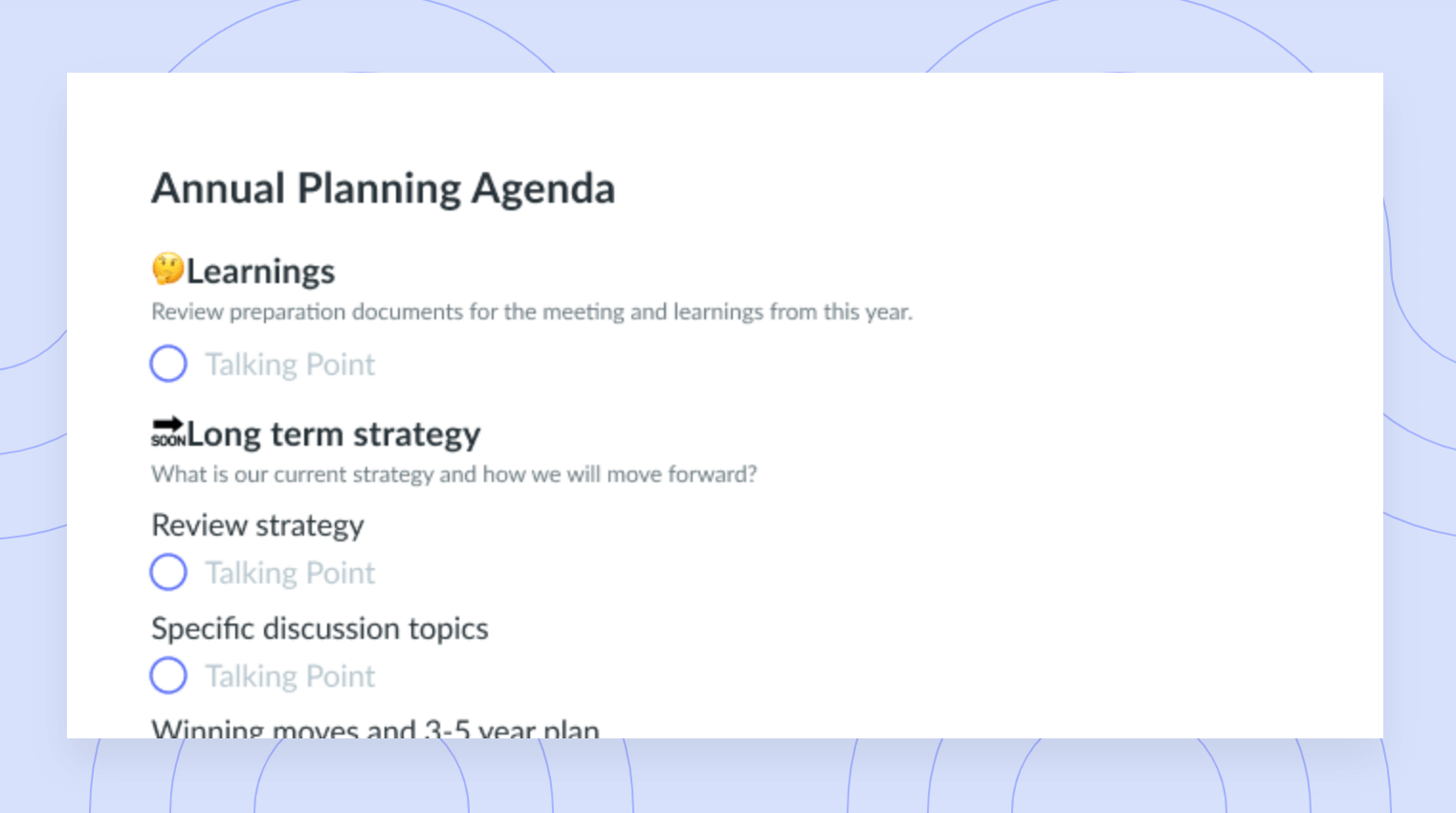Business Planning Tips for 2024: 8 Experts Advice
Best practices from leaders at G2, Procurify, Fellow (and more!) on how to motivate your team and plan for the year ahead.
Motivating your team and setting goals are arguably two of the most important practices that you can implement to plan for a successful year.
Earlier this year, we were joined on Twitter by a group of stellar planning enthusiasts that took us on an epic journey of monthly, quarterly, and annual planning insights.
If you’re looking for tips and insights that will help you crush your planning goals for 2021 then this #ManagerChats recap is for you!
1 What does your planning process look like and do you plan on a monthly, quarterly, or annual basis?

“I’m a big fan of OKRs! We have an annual strategic planning process and prioritize bigger picture items. We set quarterly OKRs and check-in weekly. No matter the tool, establishing a consistent cadence of communication is critical to the planning process.”
– Emily Key, CEO at Northumberland Group

“Planning is the crux of any company’s success. Without a proper Project Chart of our tasks, activities and initiatives, we wouldn’t be able to meet our client’s expected timelines.”
– Priscilla Kosseim, Cybersecurity Service Delivery Manager at CGI

“We plan primarily on a quarterly basis. That gives us enough time to hit our stride while not working at something for too long without reflection. As an executive leader, I typically decide the what and why, but leave it to my team to decide on the how.”
– Marissa Goldberg, Founder at Remote Work Prep

“Effective short term plans need to lead to a bigger picture; paint that picture for the team and leave the team to work backwards. Ask questions; align to company and department strategy, how will success be measure? Key: always is to reflect, learn, iterate and try again!”
– Lauren Harcott, Director of Customer Success at Procurify
2 How do you get your team involved in the planning process?

“The most important thing you can do is make it clear to people what is already decided and what is not up to them. Then encourage people to be creative and authentic within the parameters defined by the organization’s goals and resource constraints.”
– Bruce Tulgan, CEO at RainmakerThinking

“Planning always starts with going to my team and asking what THEY want to work on. Since they’re closer to the code, they have better ideas than I do about managing tech debt, and I want to make sure that they work on projects they find fulfilling.”
– Alexandra Sunderland, Engineering Manager at Fellow.app

“It’s key to get people bought into the goals you’re setting – w/w reporting to understand how short-term goals and everyone’s participation impact long-term numbers.
Wherever possible, assigning project ownership widely and connecting it to people’s career goals. Break down projects into skills and match from there. Develops trust and fosters an environment of safe learning.”
– Amy Lecza, Senior Manager, Content Marketing at G2
3 What planning sessions do you run and what is the typical structure of those meetings?

“I try to keep meetings to a minimum when planning remotely and use together time for problem solving and aligning on the same north star. We use the Amazon 6-pager model to build a single source of truth.”
– Sage Franch, CEO at Crescendo
“How we planned the Q1 strategy for MarketingComms:

- 2.5 day “sessions” with tons of breaks, interaction & brainstorming time
- Detailed agenda & purpose for each meeting
- Lunch reimbursements
Meetings shouldn’t be longer than 50 minutes. You’d be surprised what be done in a shorter period of time. This year, we limited retro presentations to 5 mins… people were scared. But turns out, everybody said what they had to say in less than 5 mins.”
– Alice Ko, Director of Marketing Communications at Procurify, Certified Gallup Strengths Coach

“For projects, we start with a brief and highlight goals and risks; then flesh out time, scope, and budget. For planning strategies, we highlight the end state first and identify a theme before diving into research.”
– Rachel Gertz, CEO at Louder Than Ten
4 How do you define your key metrics and strategies? Any pro tips to navigate this process?

“Make sure your metrics are going to move the needle. Some teams have metrics but chase the wrong goal. Don’t be afraid to update or revise mid-cycle.
According to research on “specific goals” from MIT, average teams moved to the *88th percentile* if they did three things well:
- Worked on fewer goals.
- Added *very specific* milestones and criteria
- Exchanged regular feedback with each other.” – Ali Merchant, Leadership Coach and Consultant

“When your team contributes to many other teams’ work, it’s important to establish one North Star goal to keep your core folks on track. From there, aligning with other important company-wide metrics to help communicate impact up the ladder is key too.”
– Amy Lecza, Senior Manager, Content Marketing at G2

“My team publishes our service standards on our website. My primary goal is to meet those targets and find ways to improve our services. When your targets are published for the world to see it lights a fire under you!”
– Carly Basian, Manager, Student Financial Assistance at Ryerson University

“I look at this two ways. At a micro level, I think some of the most valuable, clear and achievable metrics are around any keep-the-lights-on work you may have. The bread and butter basics. At a macro level, I think speed, confidence and freedom ‘metrics’ should be top of mind. Are people getting faster? Doing better? Feeling better? Able to do more? How will you know? These need as much attention as daily metrics. Maybe even more.
As for defining metrics, I think an important practice is consistently questioning why a metric is valuable, assessing if it’s still worth pursuing as-is or needs to be fine tuned or discarded. This is scary territory especially if it looks like you’re doing well.”
– Brendan Cooney, Head of IT Support.at EF Tours
Manager TL;DR Newsletter 📩
Get management tips, interviews, and best practices directly into your inbox – and become a better leader.
5 How do you take really BIG goals and break them down into more manageable chunks?

“Break plans into intermediate goals, and break intermediate goals into small goals, and break small goals into concrete actions. Make a time budget and a list of specifications for each action then communicate and coordinate with your colleagues.”
– Bruce Tulgan, CEO at RainmakerThinking

“A project is like climbing Mount Kilimanjaro. Look at the peak of the mountain from the bottom and you might feel discouraged and overwhelmed and perhaps even walk away from the challenge at the onset. But break that mountain down into small achievable checkpoints of their own, and you will encourage yourself and your team to reach the very top before you know it. Celebrate your wins, and learn from your challenges.”
– Priscilla Kosseim, Cybersecurity Service Delivery Manager at CGI

“Work backwards and be realistic about constraints, resources, and potential pitfalls. Keep your big picture separate from your day-to-day. It’s easy to get overwhelmed if you’re not focusing on what you can do in the moment.”
– Marissa Goldberg, Founder at Remote Work Prep

“Whatever the size/scope/scale, the tasks have to be meaningful, backed by sound decision making and they need to have someone truly accountable to them. Someone authorized to make decisions, flex when necessary and drive. After that, whether they are rice-sized grains or sand-sized grains becomes moot. Any size of granularity will work because the person running things can adapt and get it done.”
– Brendan Cooney, Head of IT Support at EF Tours
6 What systems do you implement to make sure that the plan you’ve developed comes to fruition?

“Regular check-ins are super important for tracking progress on goals – and to gauge how the people most connected to the work feel about it. Even if you’re not meeting formally every week, check in w/ people over Slack weekly to ensure they feel supported.
Managers check in together weekly on large projects and metrics, and cross-functional projects generally meet biweekly to promote open communication along the way. When it comes to cross-team work, more comms is always better than less.”
– Amy Lecza, Senior Manager, Content Marketing at G2

“I look at my calendar every Sunday and prioritize relentlessly before the week starts. Is it going to get me closer to my goals? Yes? Great, let’s do it! No? Cancel it or don’t do it!”
– Cassy Aite, CEO at Hoppier

“Weekly OKR check-in on Mondays. Stand-up meetings on Wednesdays to stay aligned and reprioritize if necessary. Weekly one-on-ones with team members. Celebrate wins on Fridays!”
– Emily Key, CEO at Northumberland Group

“Depending on the scope of the goal, I have different techniques. I use Google Calendar religiously to set reminders in advance when I have to check in with someone/make sure a target is hit on time. I also use my calendar to block off time to work. It is easy to get caught up in meetings, email, and putting out fires.
I schedule send emails if someone says “I will follow up by X date” to make sure we don’t lose track of our progress. As mentioned earlier, I use a critical path to make sure I don’t miss important milestones.
My biggest learning as a manager is that some people really struggle to remember their deliverables and commitments, and sometimes you have to step in to set expectations and make sure things get done!”
– Carly Basian, Manager, Student Financial Assistance at Ryerson University
7 If a team member seems to be struggling to meet their outlined objectives, what do you do to get them back on track?

“Ask BEFORE telling. Very seldom will we meet our objectives without encountering a few bumps in the road. It is important to build relationships with your team so that they feel comfortable coming to you when issues arise. This is where your coaching, teaching and leadership skills will contribute to your team’s success.”
– Priscilla Kosseim, Cybersecurity Service Delivery Manager at CGI

A “one-size-fits-all” system to motivate people doesn’t work b/c people are unique. People have different motivations. Learn them. Managers, please individualize your approach! I recommend starting with CliftonStrengths.
Real example on my team: One person is motivated by stretch goals & achieving impossible things. Another person is motivated by collaborating with colleagues they feel safe with. Invest in learning people’s strengths and values and you’ll be gold.”
– Alice Ko, Director of Marketing Communications at Procurify, Certified Gallup Strengths Coach

“First, make sure you have all the information – don’t make assumptions. Facilitate a clear and honest conversation about their blockers, offer help, and reiterate your expectations. You may need to renegotiate these from time to time.
One of my personal values is giving the benefit of the doubt freely. Especially when people are managing world events plus home life plus work. It’s so important to really listen with empathy and come up with a manageable action plan and clear agreements and or expectations.”
– Amy Lecza, Senior Manager, Content Marketing at G2

“Investing hours into our teammates through mentorship. This is the most valuable thing we can do to grow them. If they’re not hitting objectives, we work to remove any barriers they’re facing, and then let them adjust the objectives so they match better with reality while increasing their autonomy each week.
Loosely, we follow this structure: Let them follow an existing system. Let them adapt within that existing system. Let them change the system. Let them create a new system. Let them teach someone else how follow/change it.”
– Rachel Gertz, CEO at Louder Than Ten
8 What are your best daily practices to stay focused on the goals that matter most?

“Remember that saying yes to one thing means saying no to something else. On a daily basis, look at the small picture so you’re not overwhelmed by the larger vision. Simplify, know your why, and continuously reflect.”
– Marissa Goldberg, Founder at Remote Work Prep

“We have a team rule of ‘Ruthless Prioritization’! Learning how to prioritize is one of the most important transferable skills that you can teach your team. I use a Time Management matrix in my personal & professional life!”
– Alice Ko, Director of Marketing Communications at Procurify, Certified Gallup Strengths Coach

“Ruthless prioritization. We can only do 3 to 5 things a day so it’s important to make them count. I remind myself each day why I’m doing this particular thing and how it gets us closer to the bigger picture.”
– Rachel Gertz, CEO at Louder Than Ten

Take care of your mind and body so you can think clearly and prioritize relentlessly. Eat nutritious food, exercise, meditate (many forms of this), and practice gratitude. Mens Sana in Corpore Sano -> A healthy mind is in a healthy body.”
– Cassy Aite, CEO at Hoppier

Free download
The art of one-on-one meeting
The definitive guide to the most misunderstood and yet powerful tool for managers. With a foreword by Lara Hogan, author of Resilient Management.
Download now








